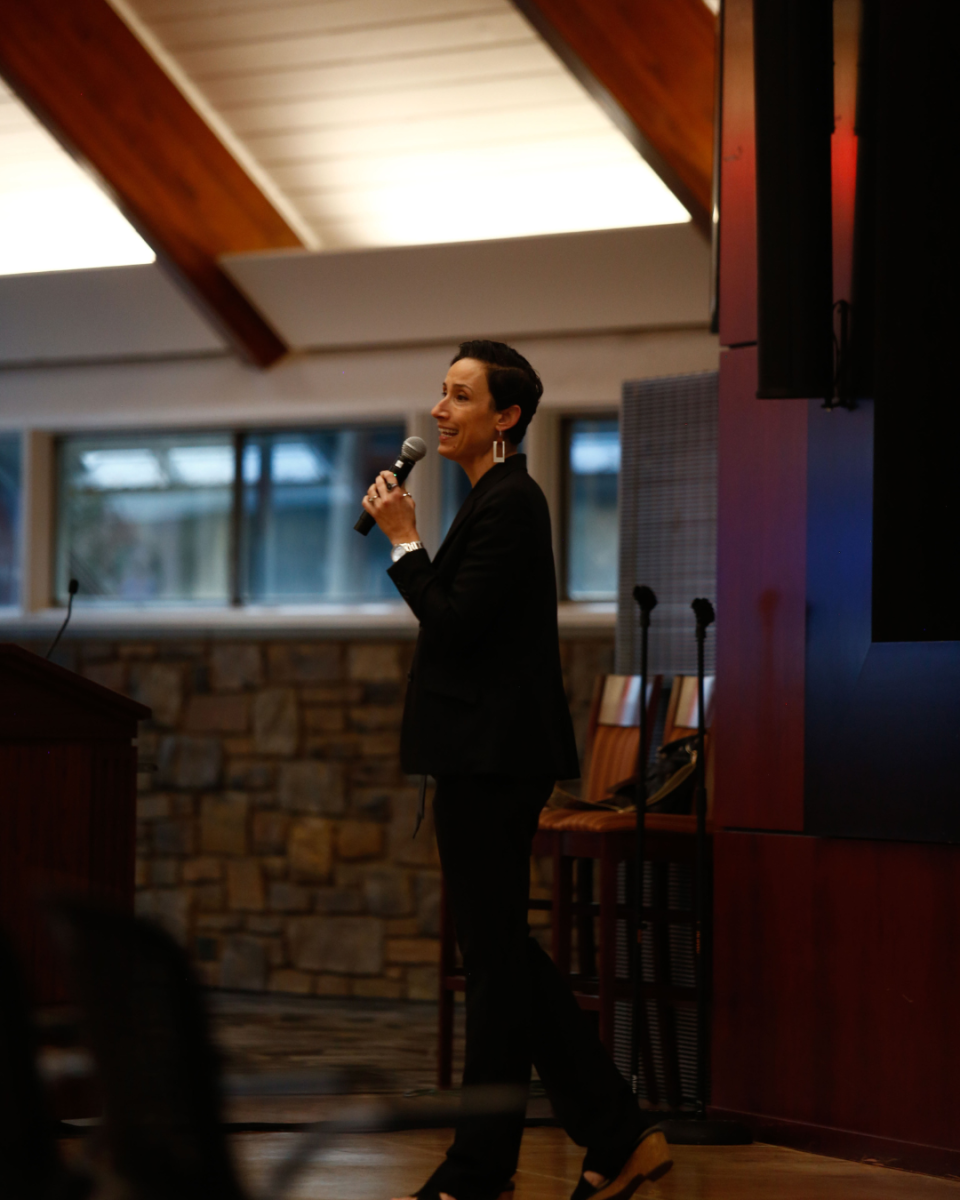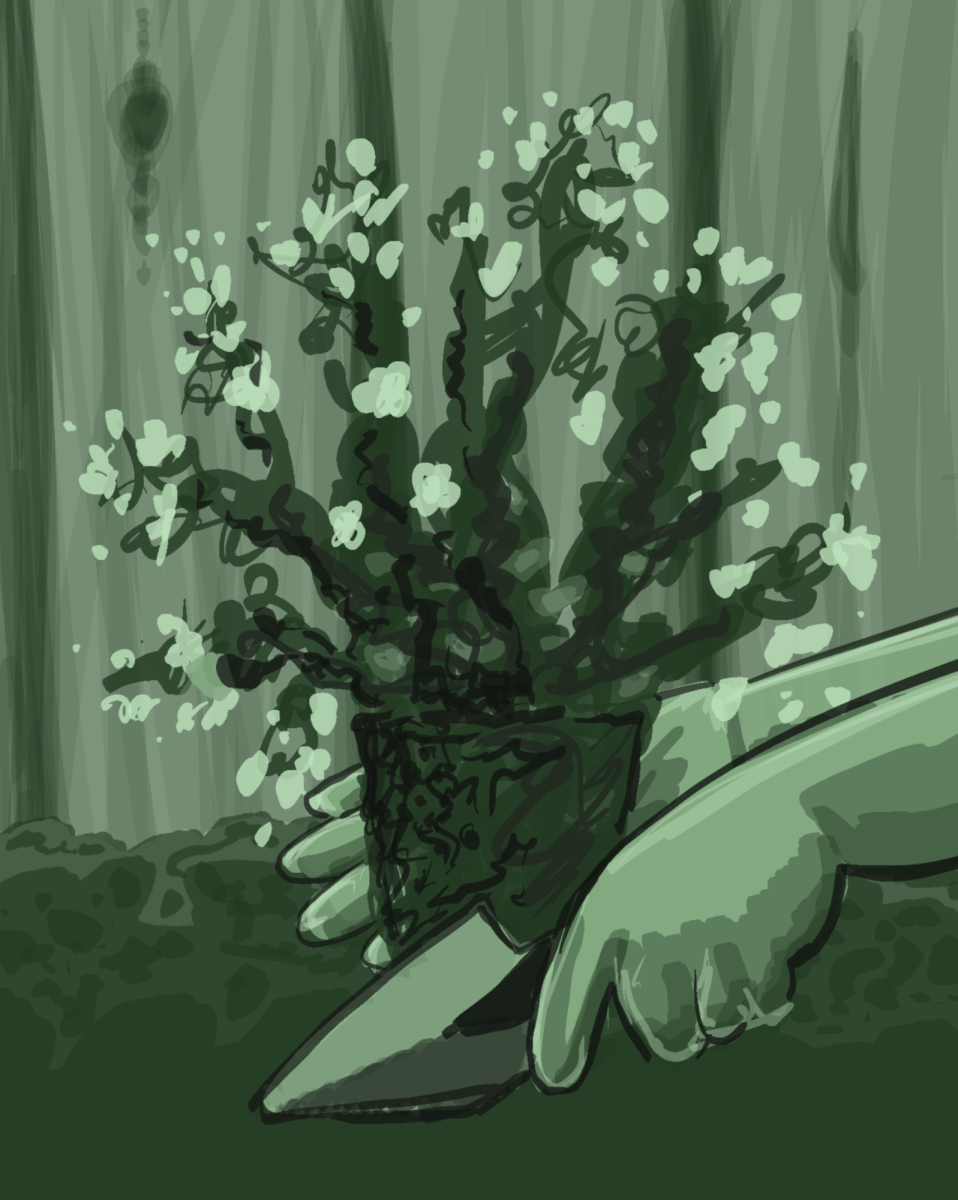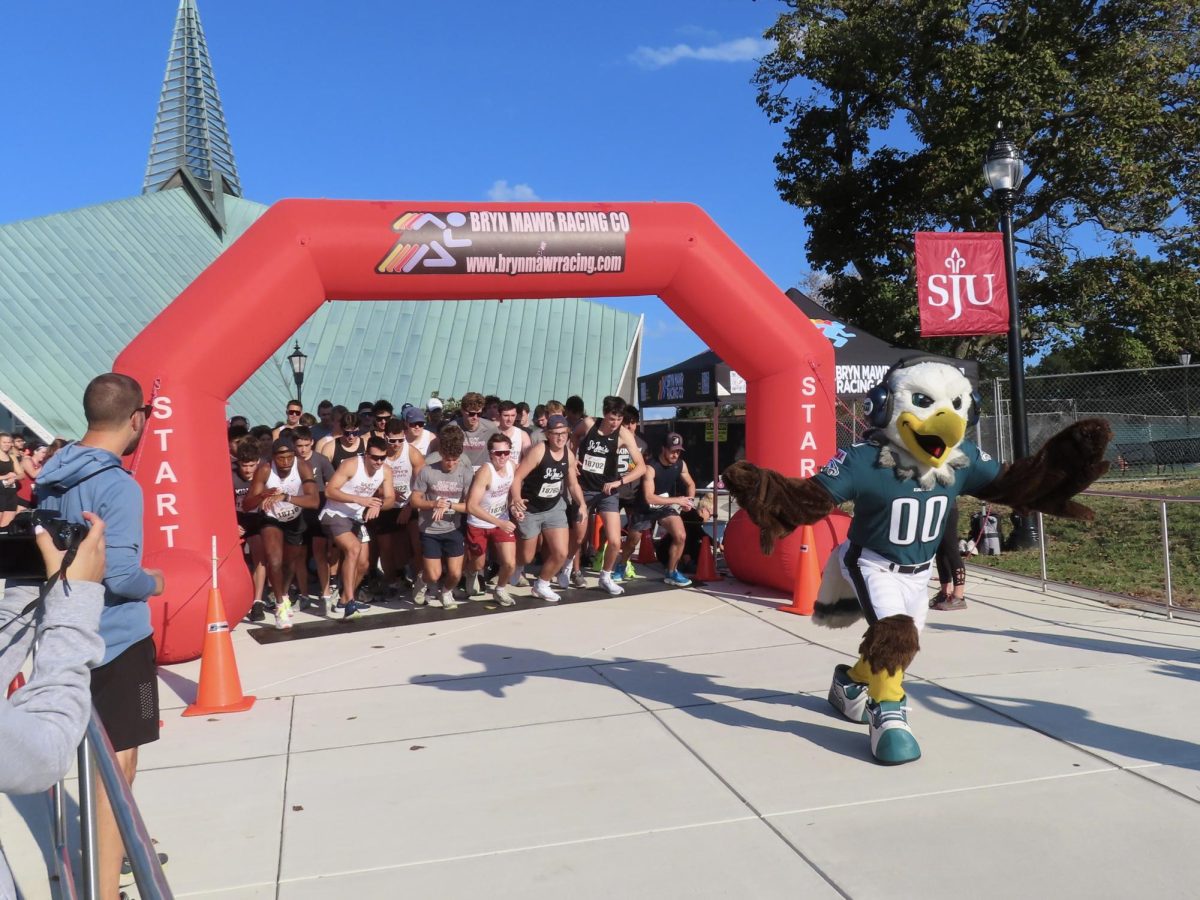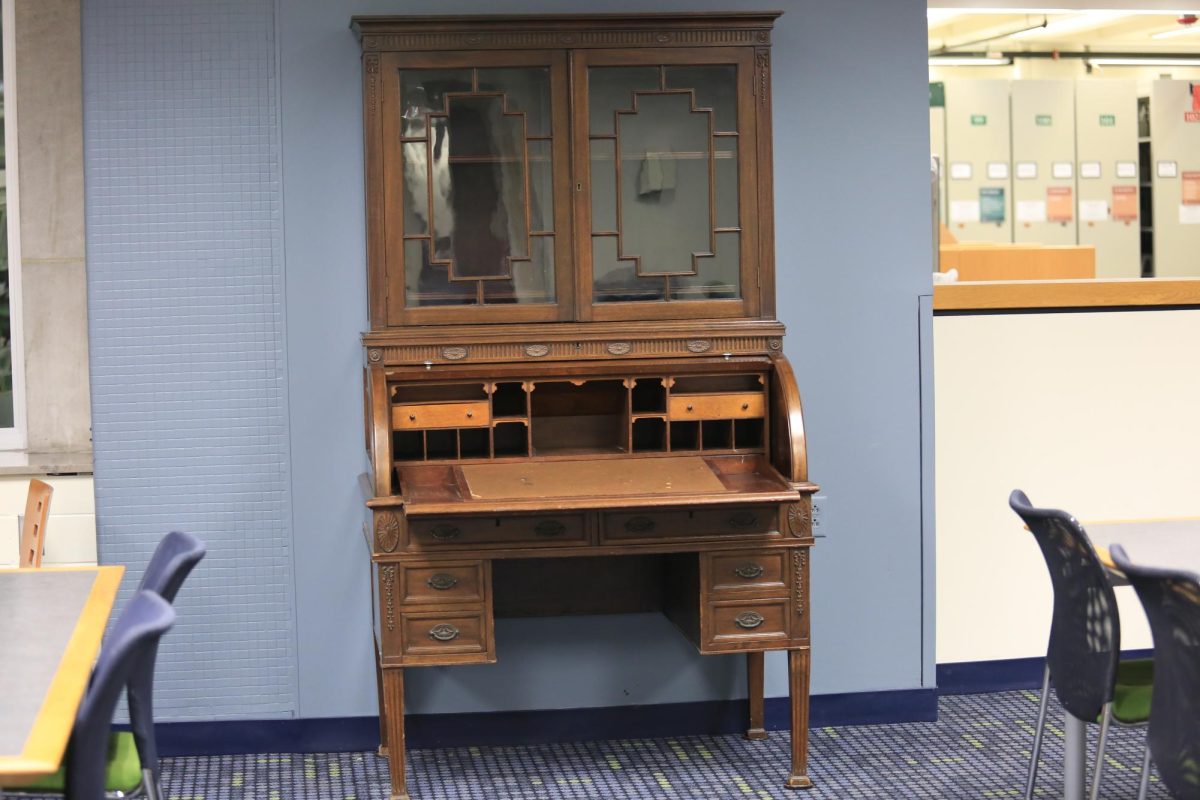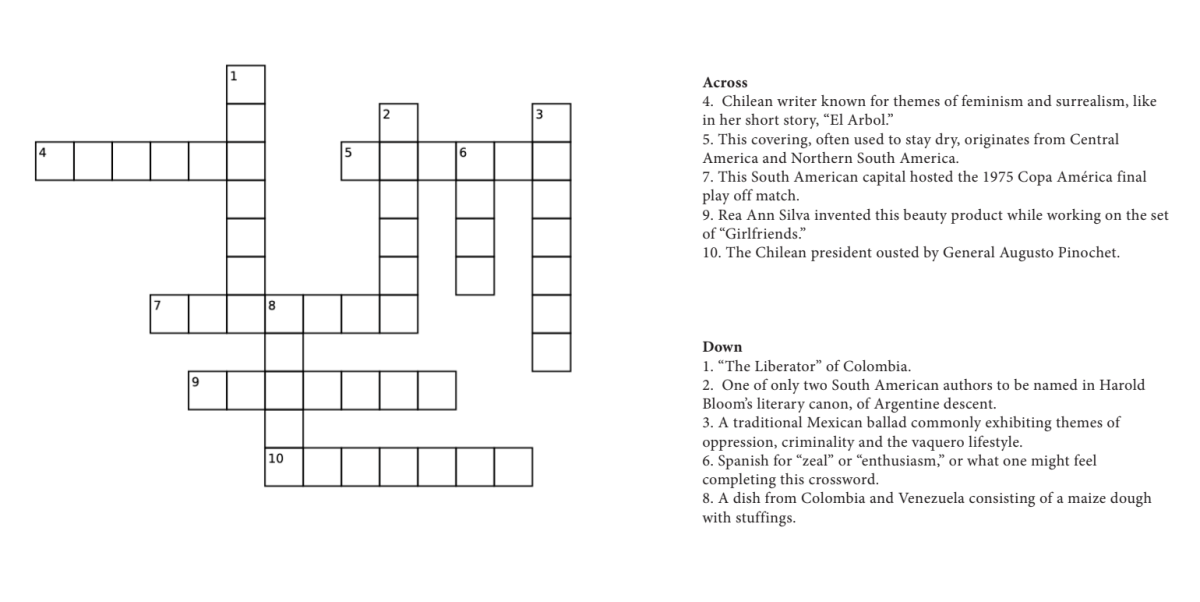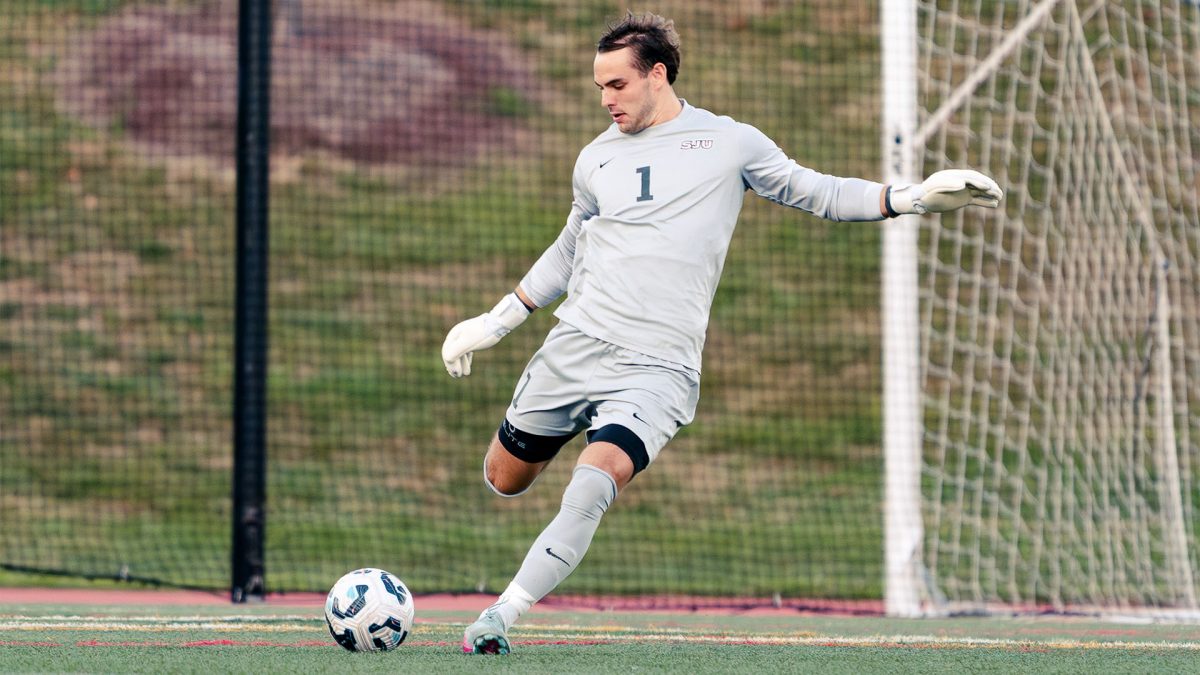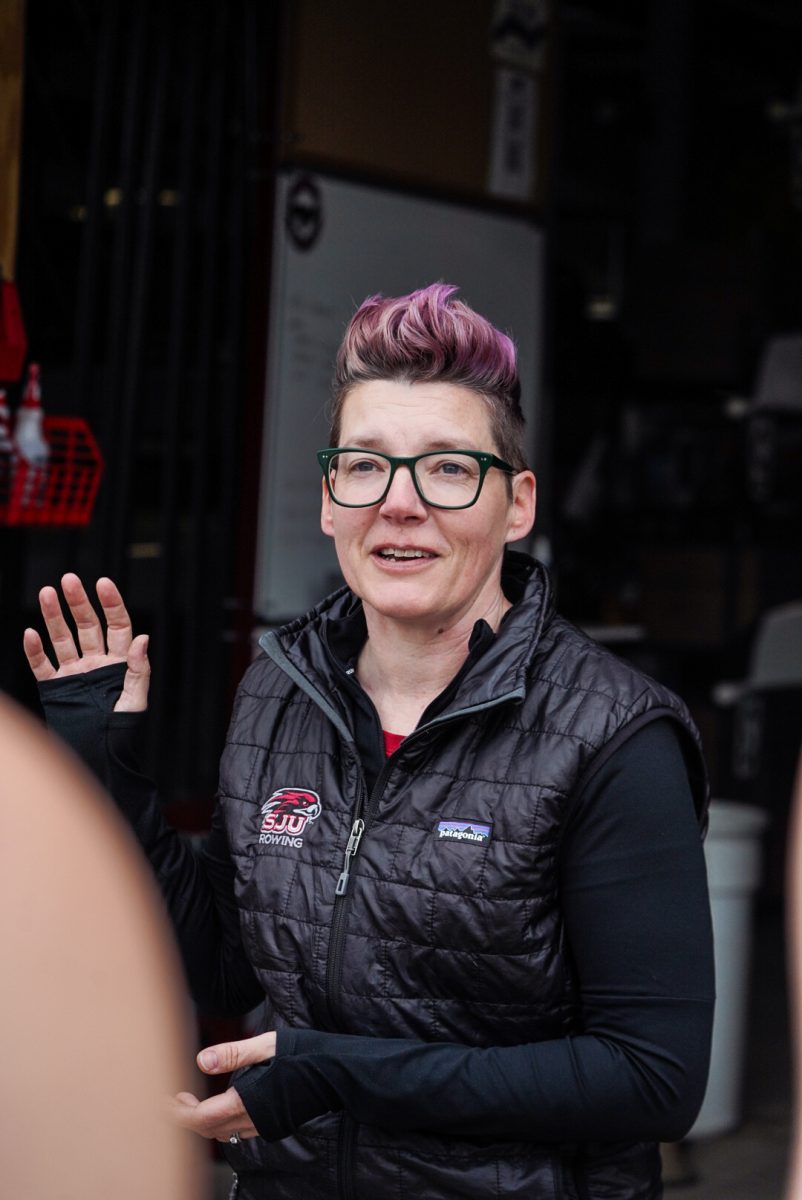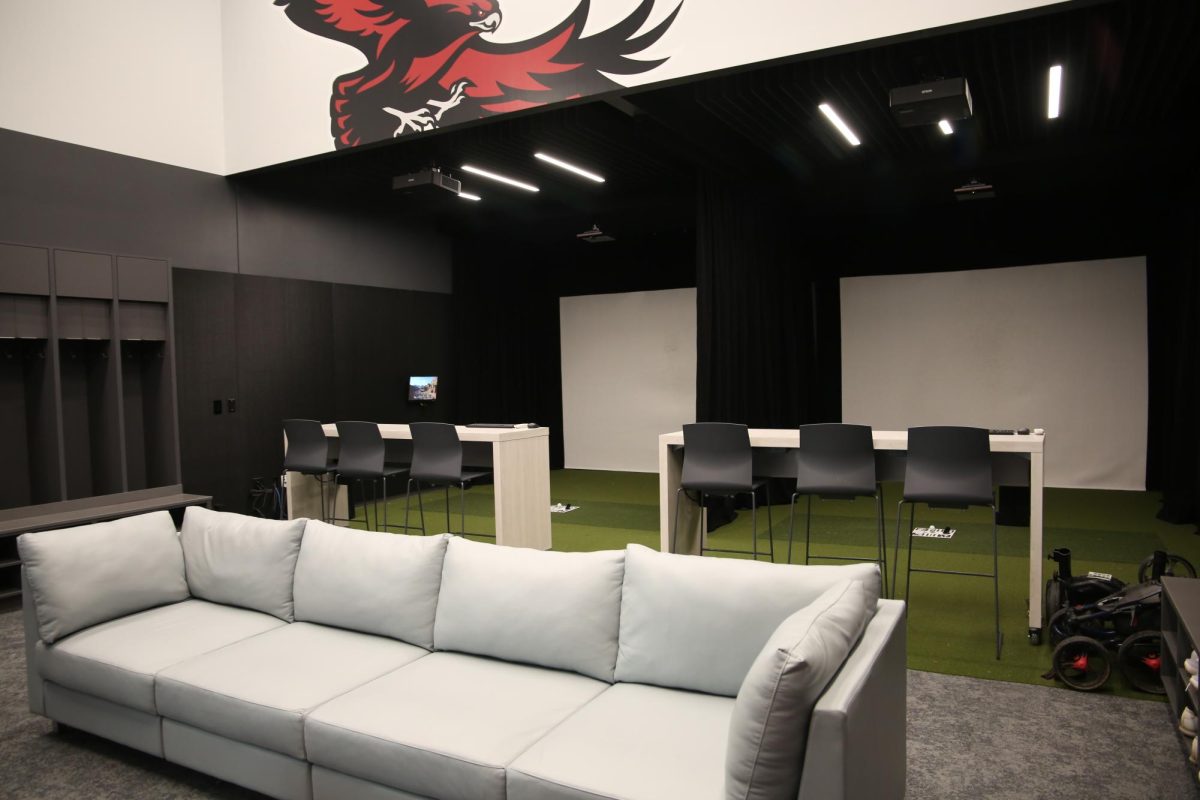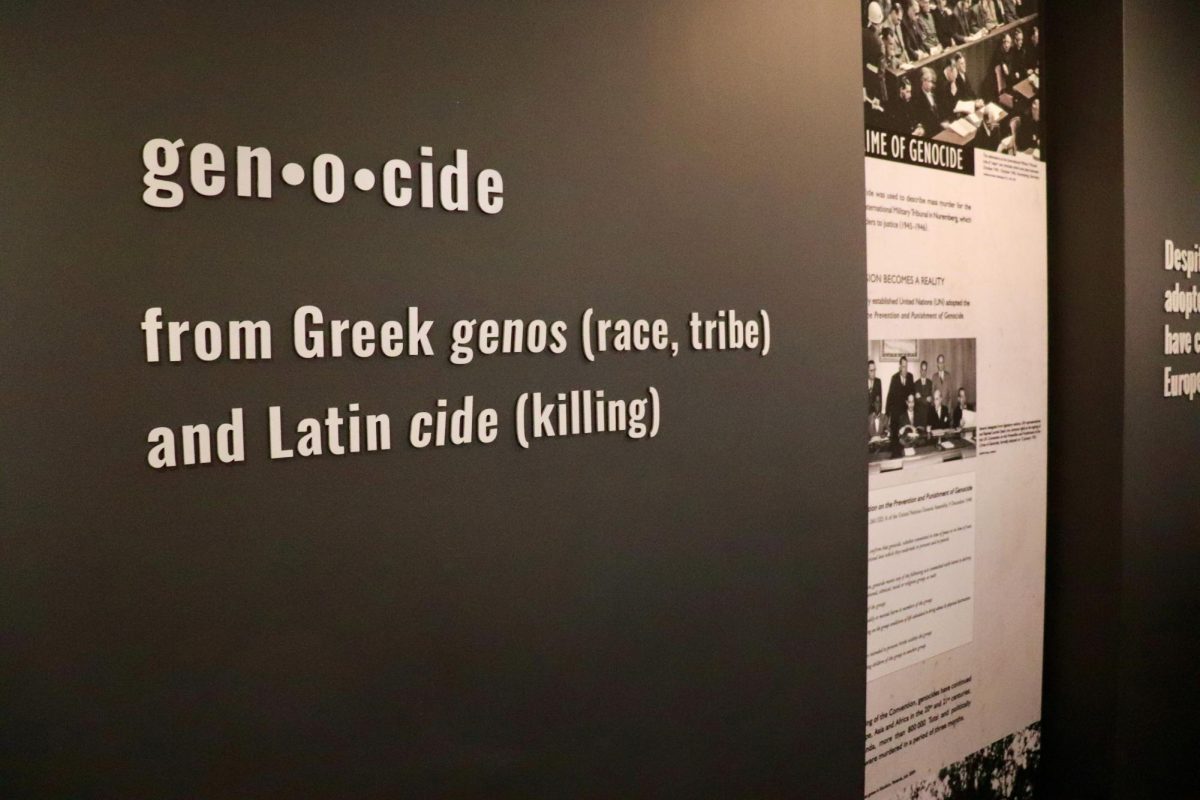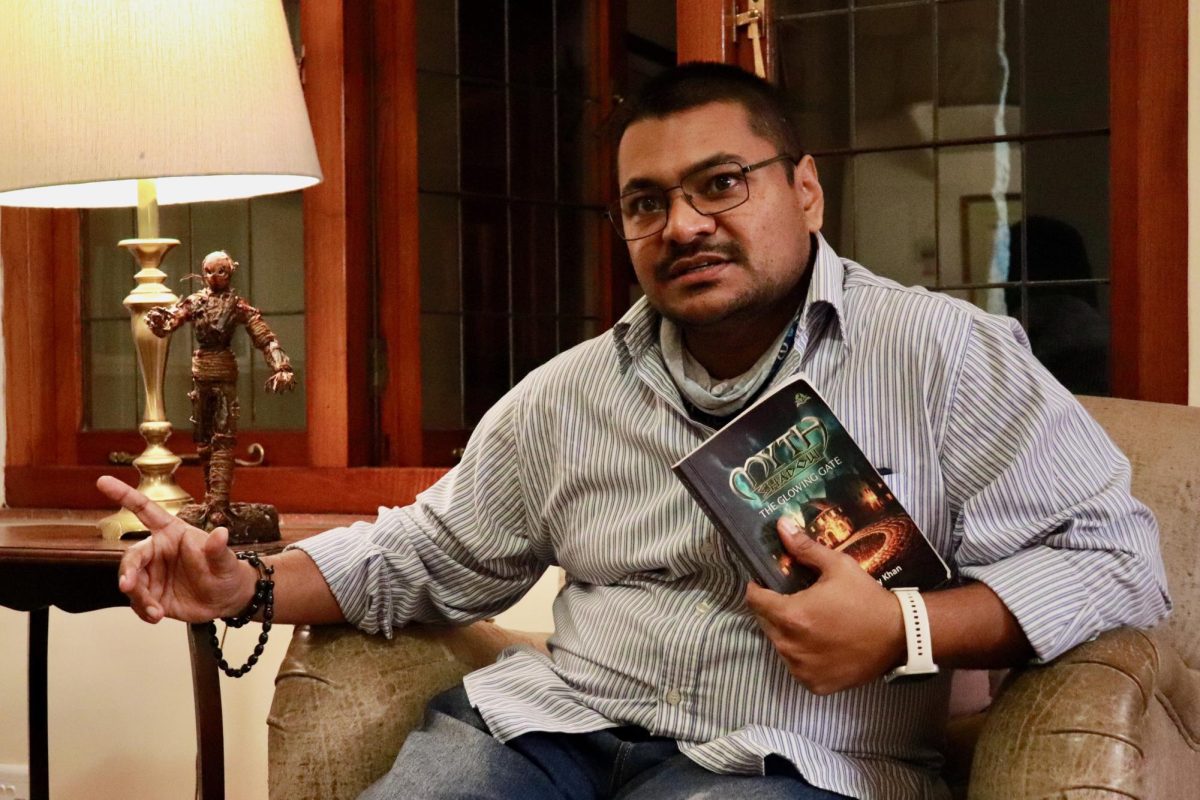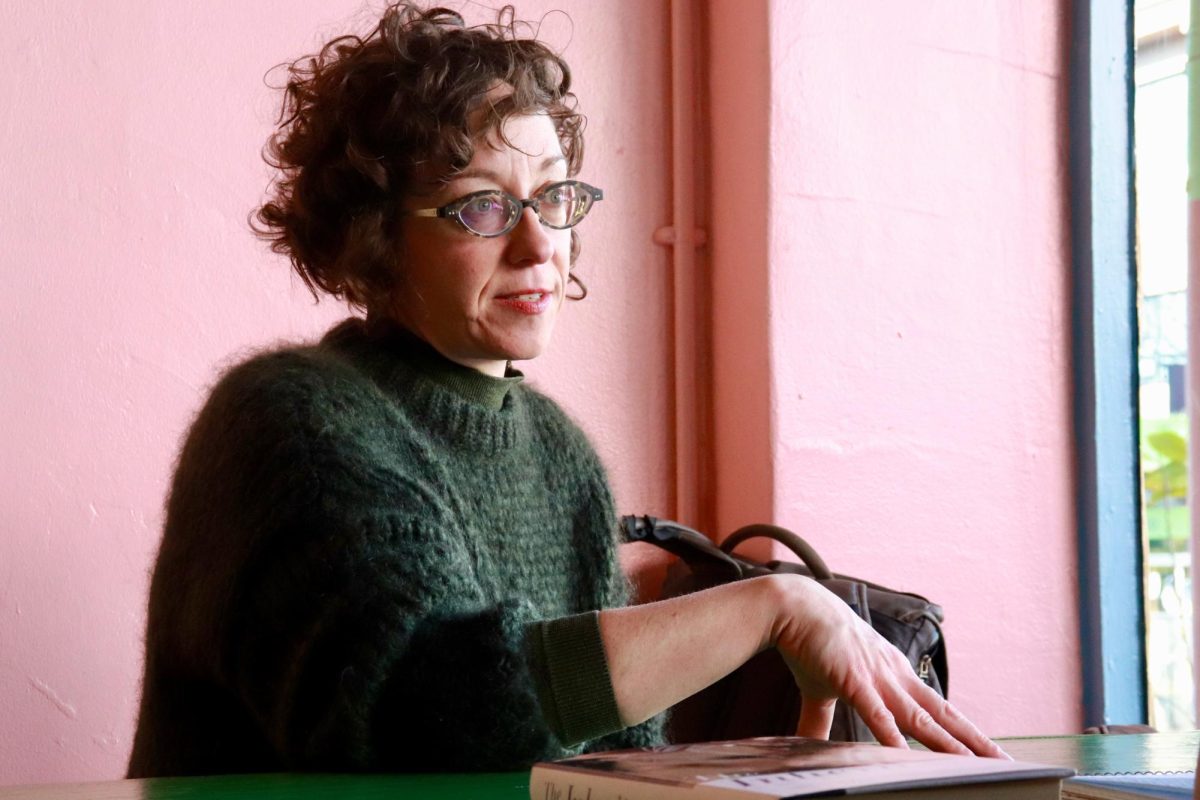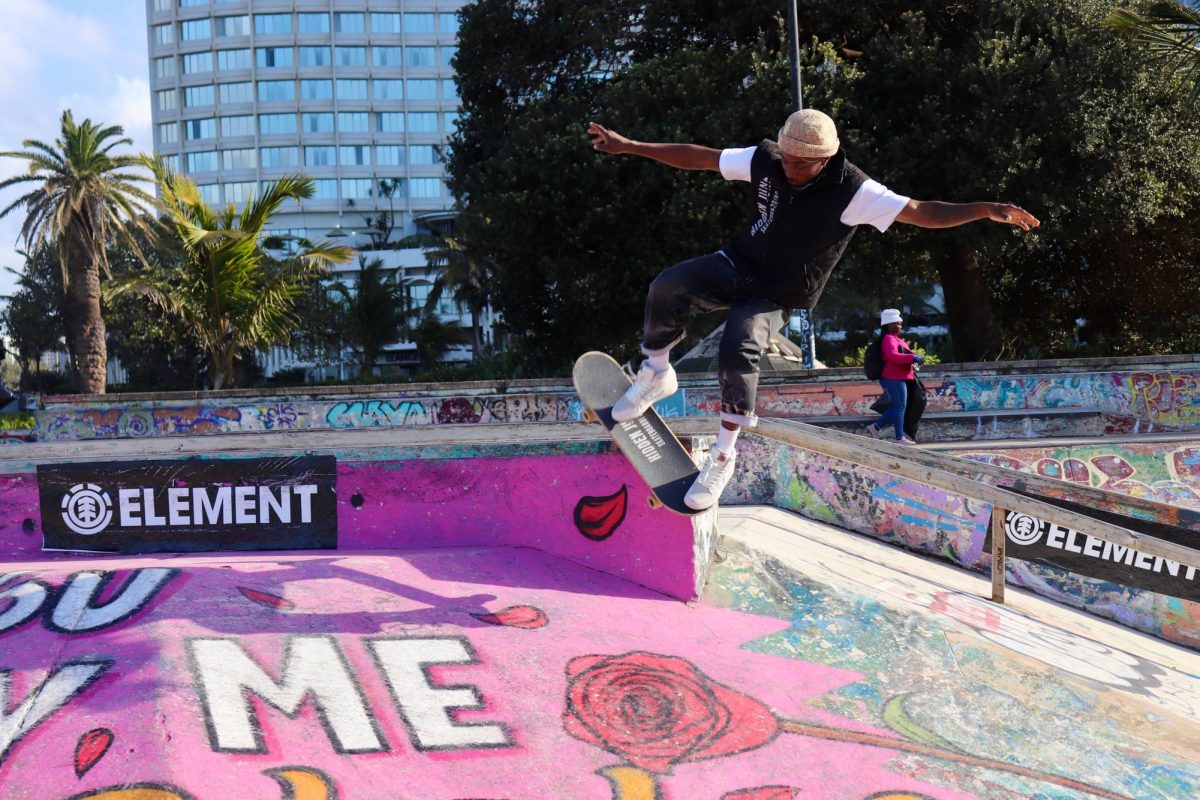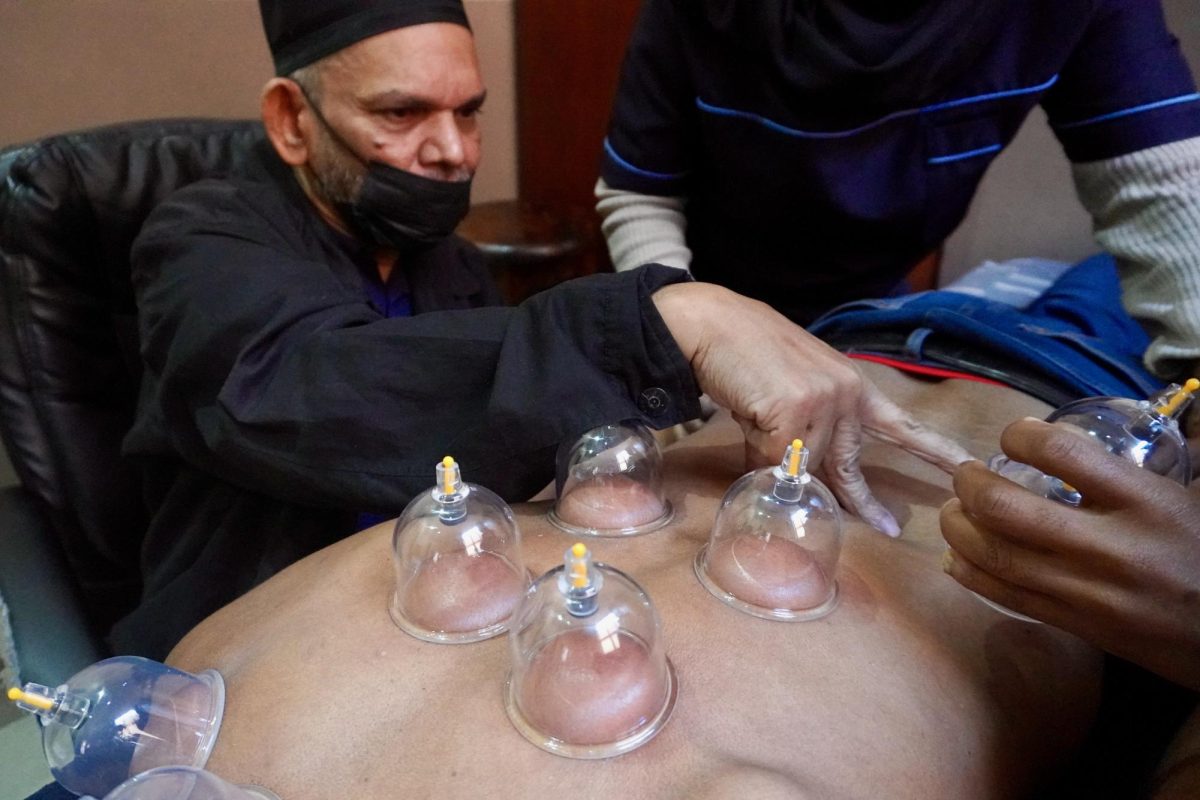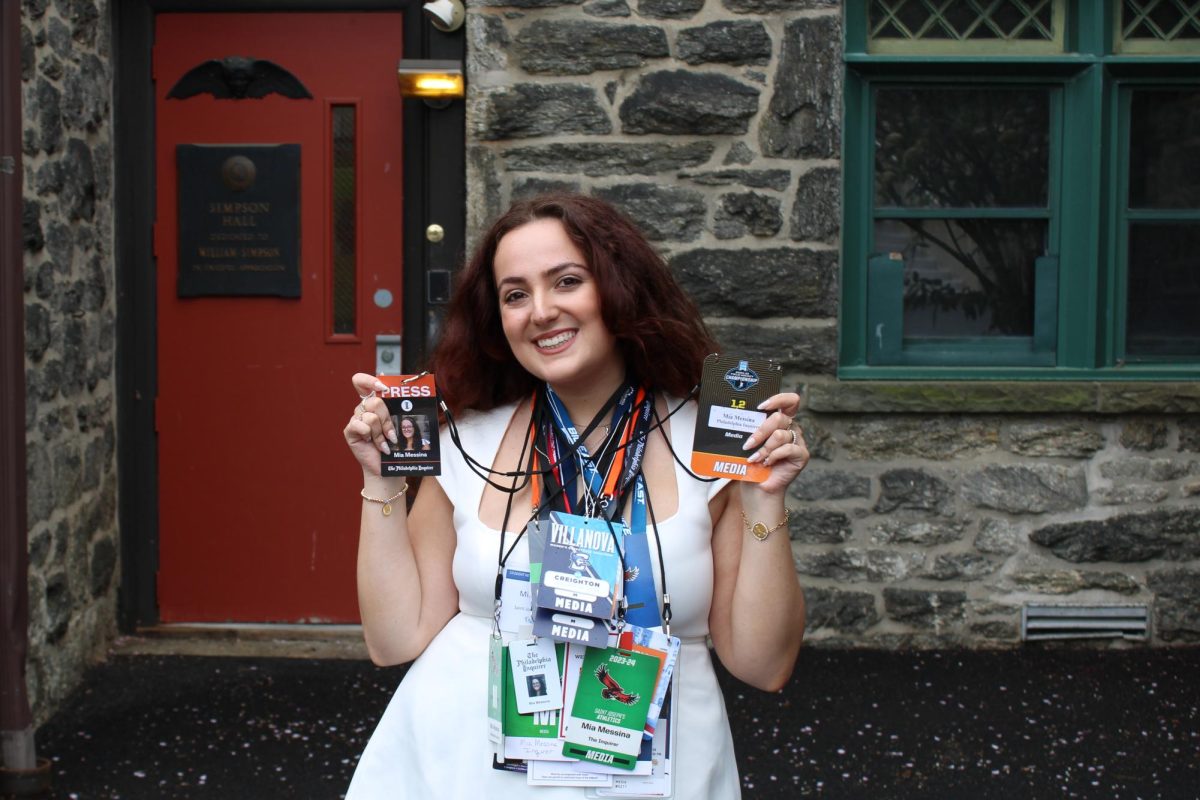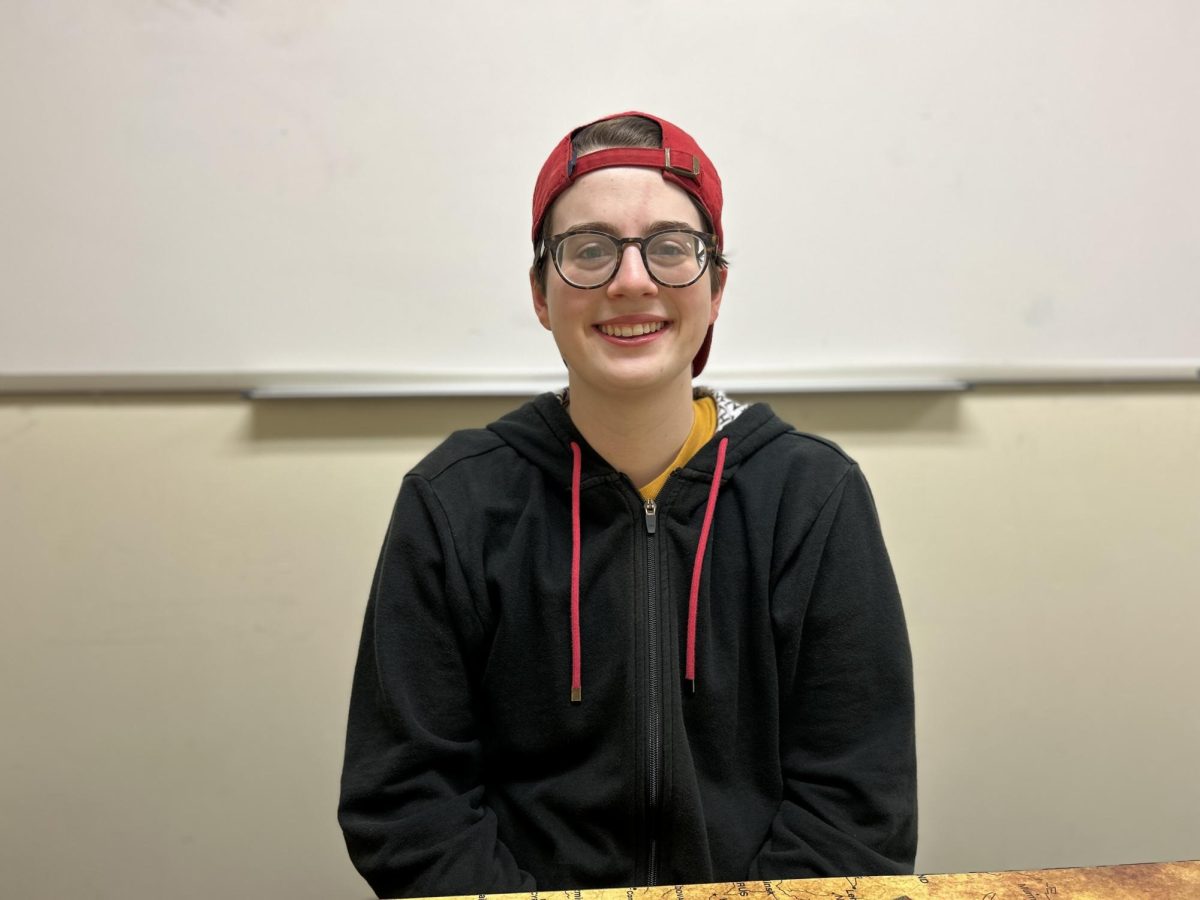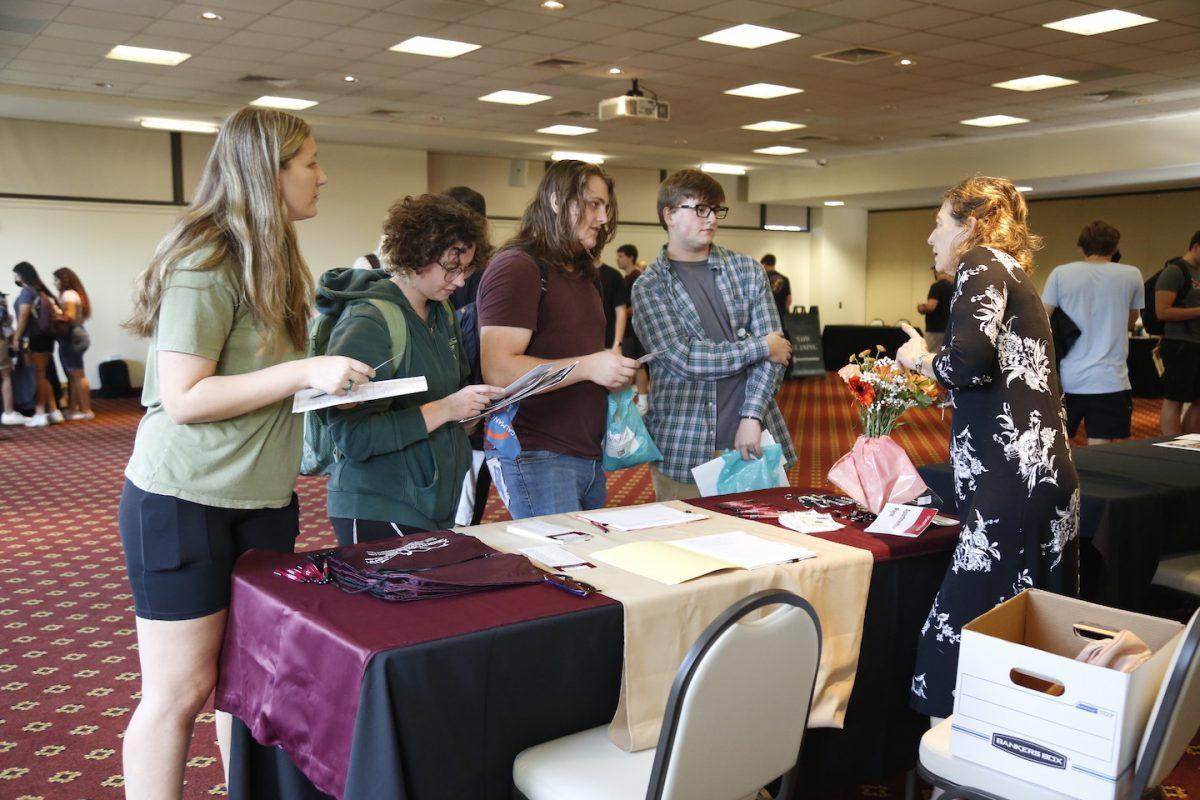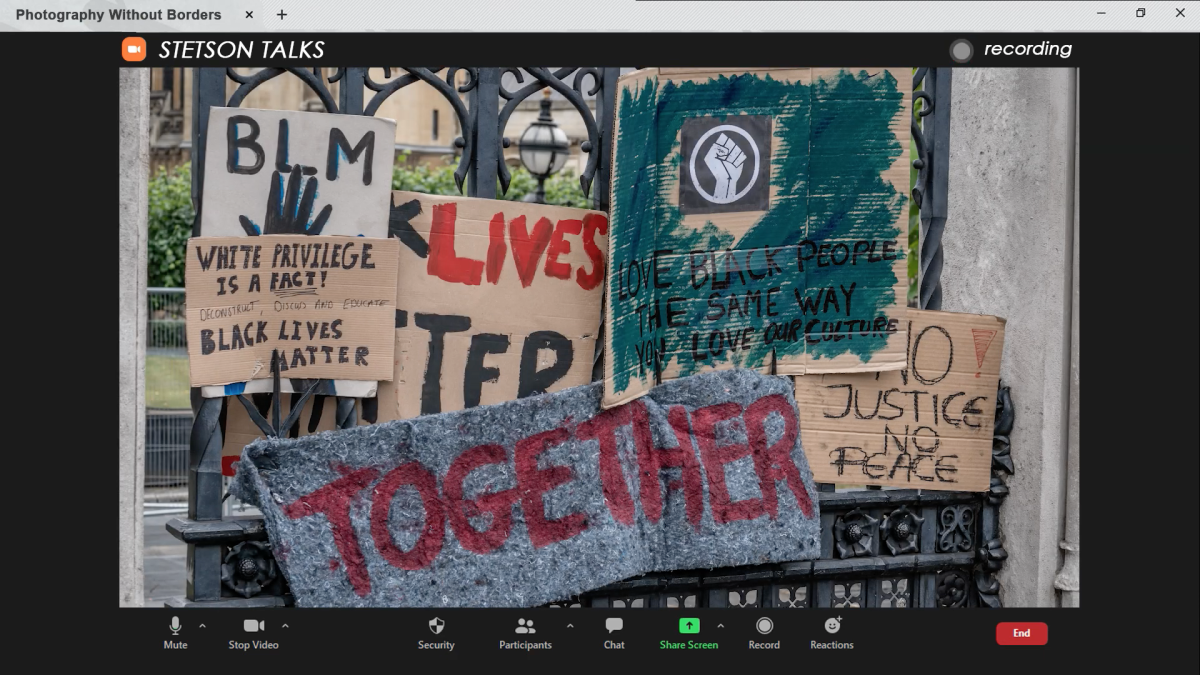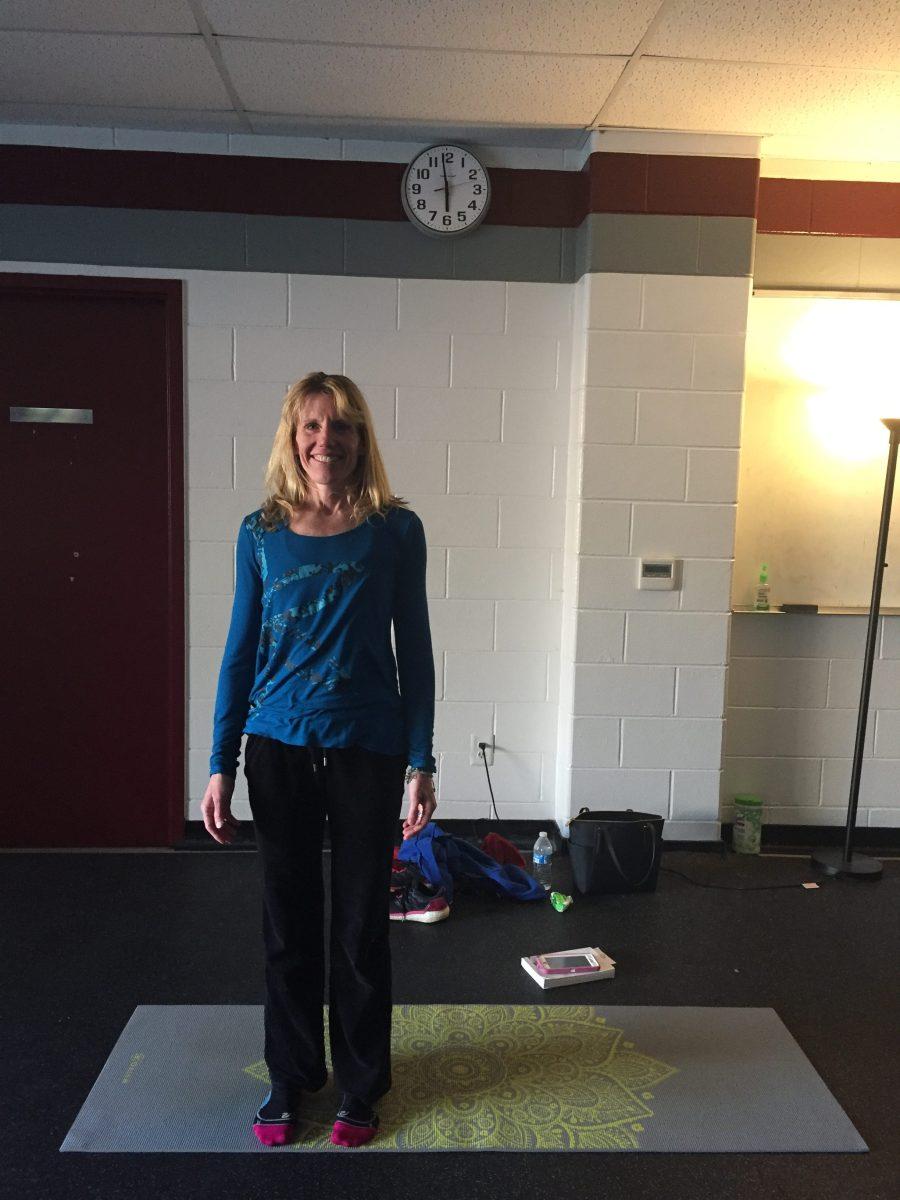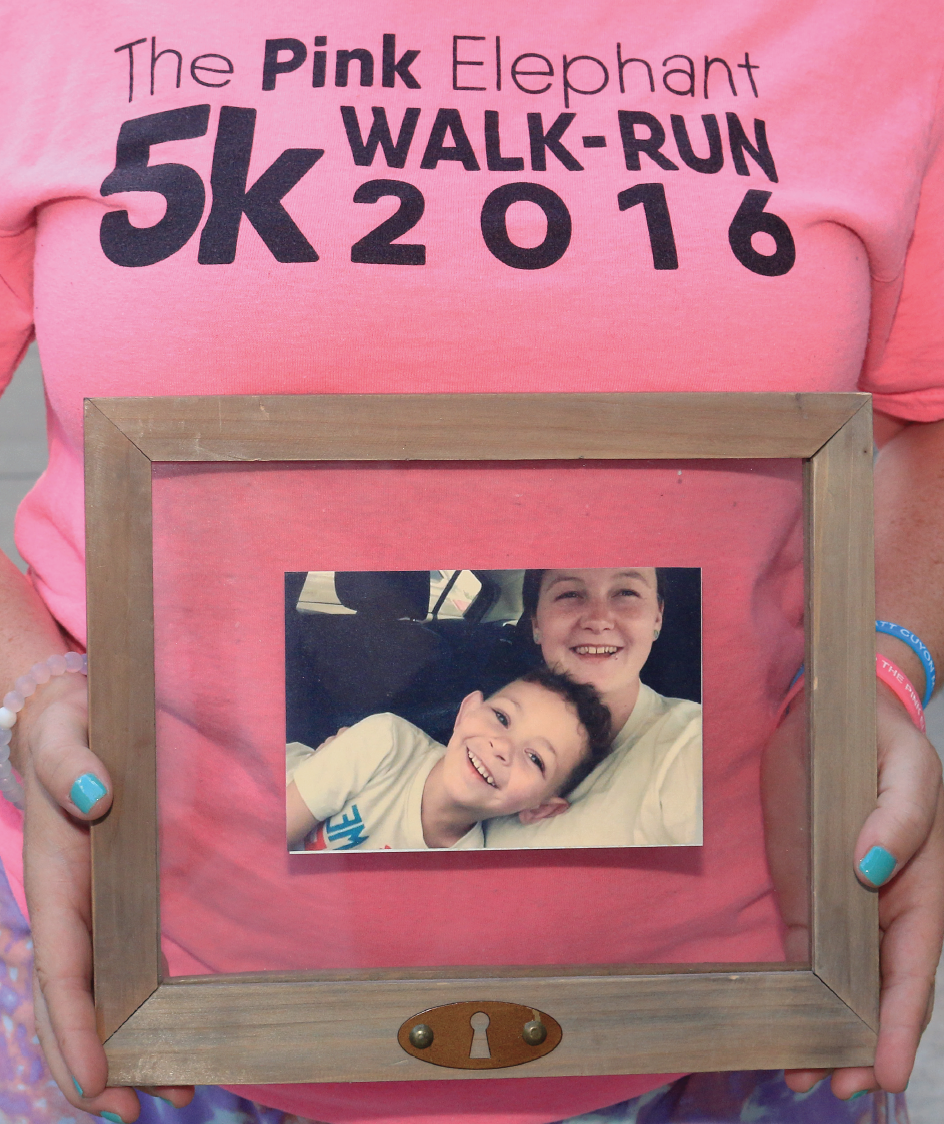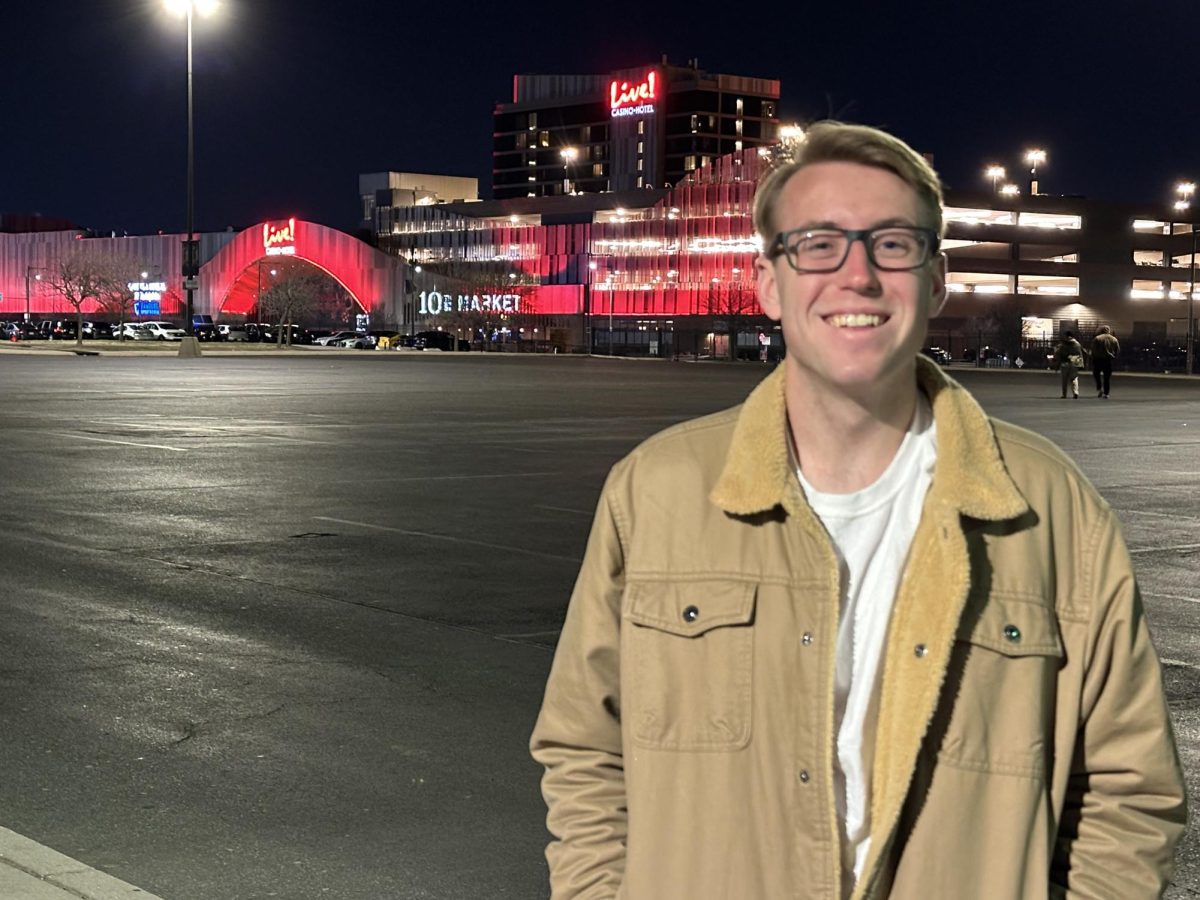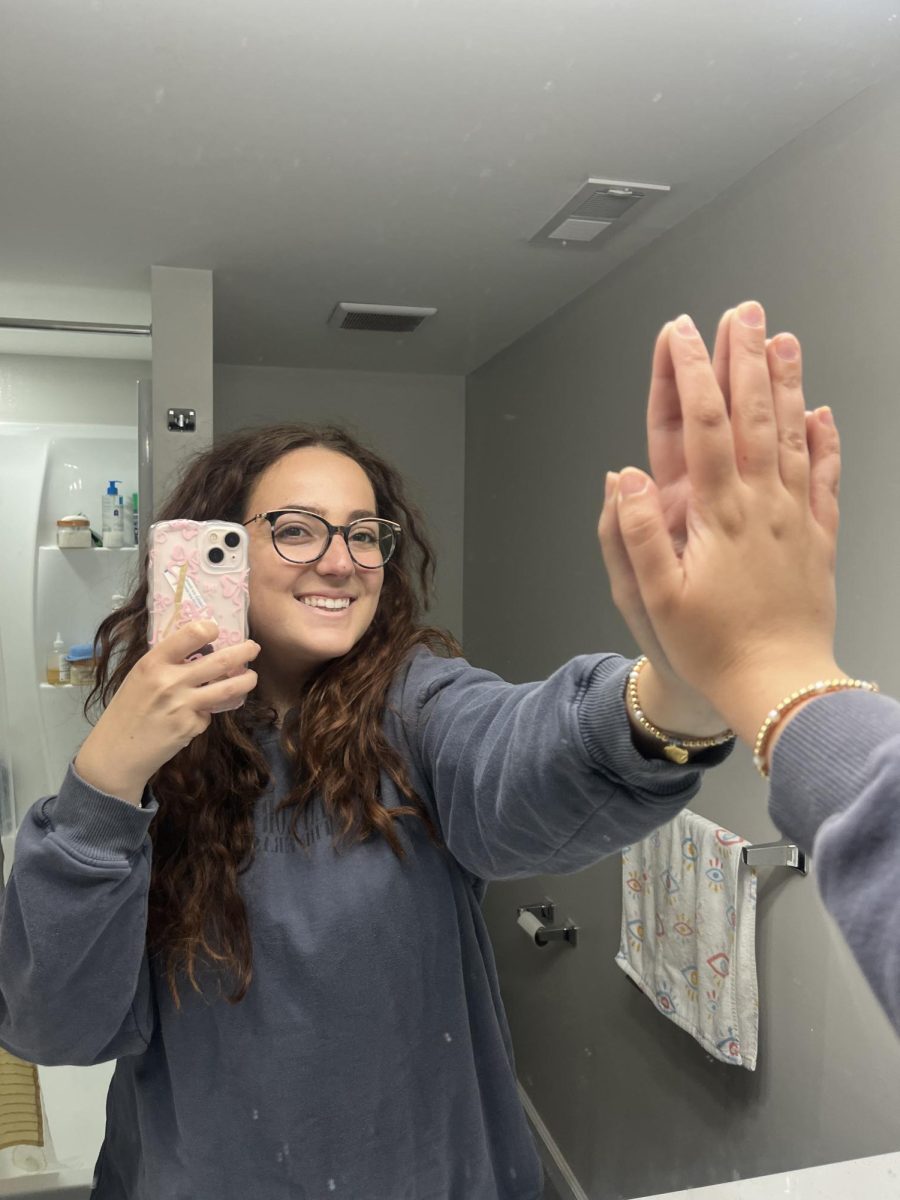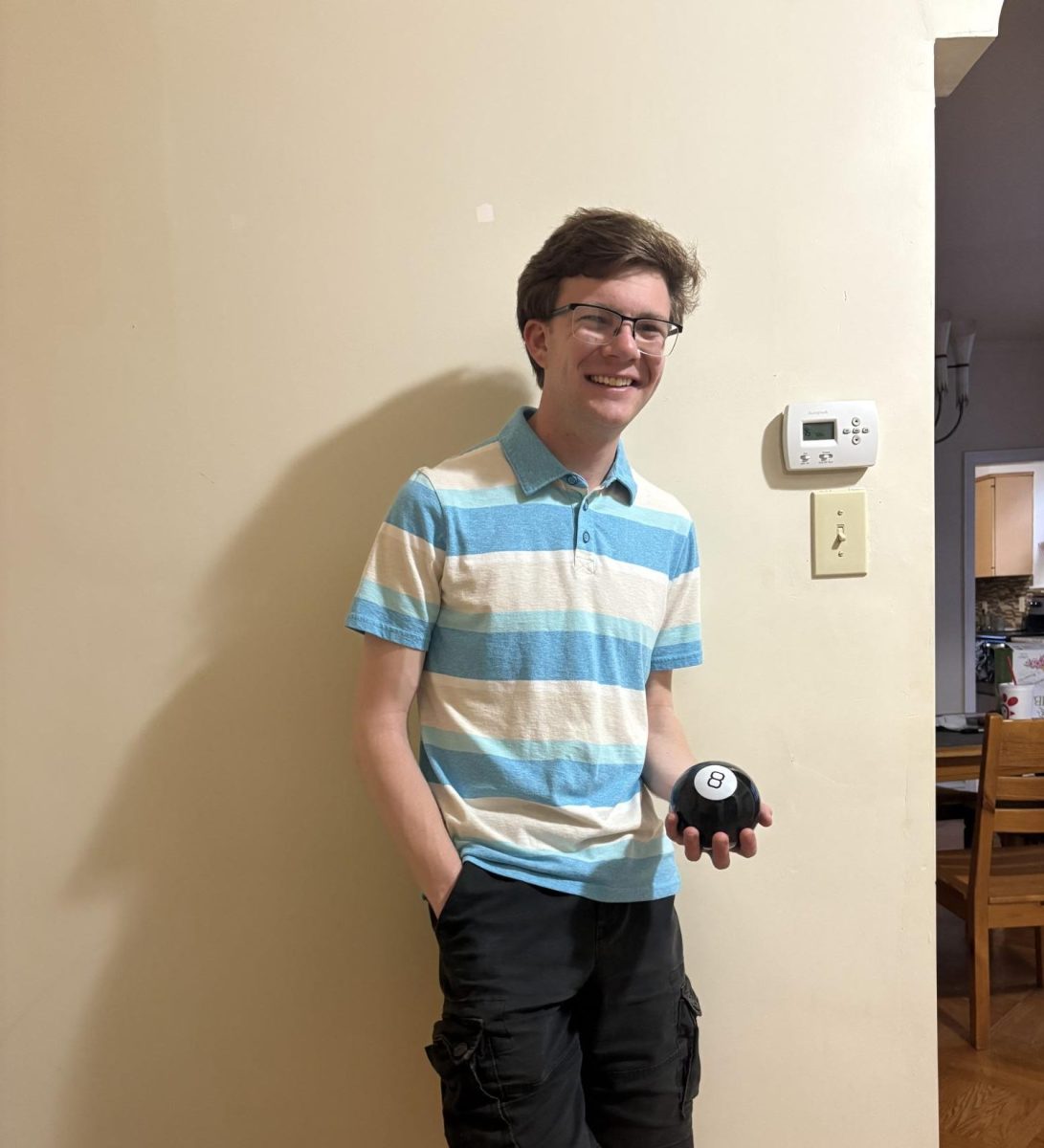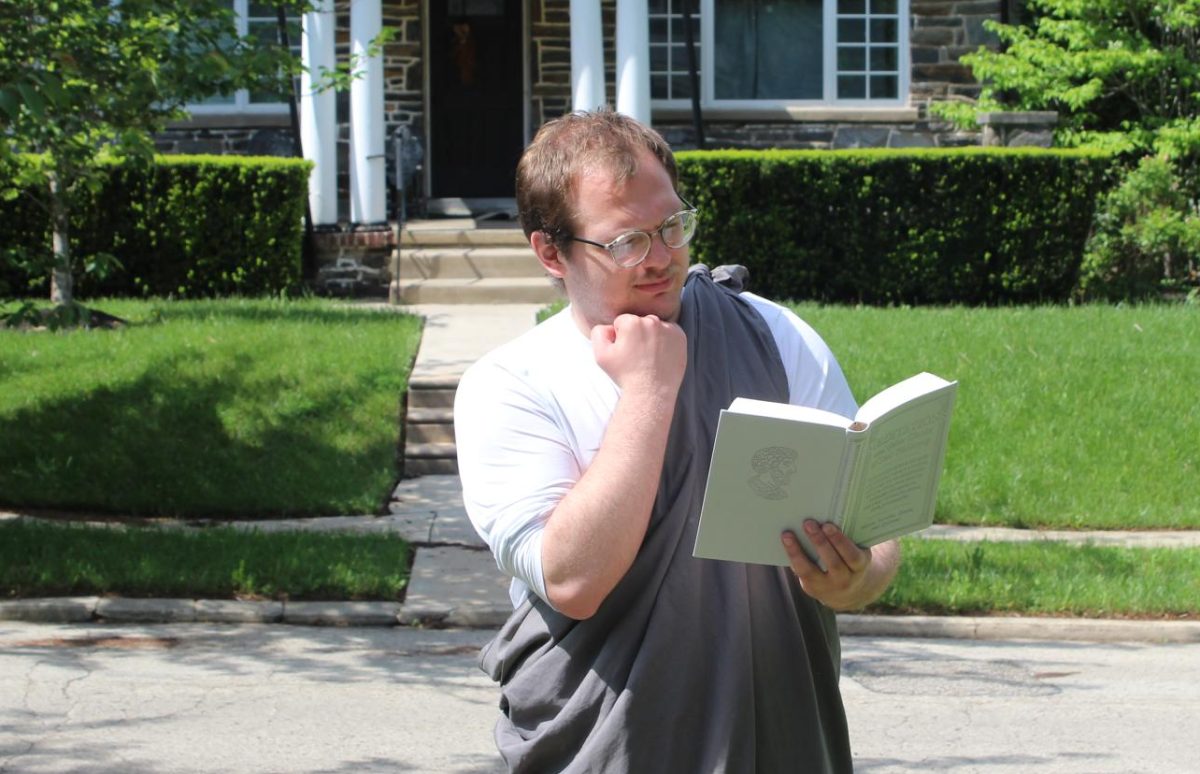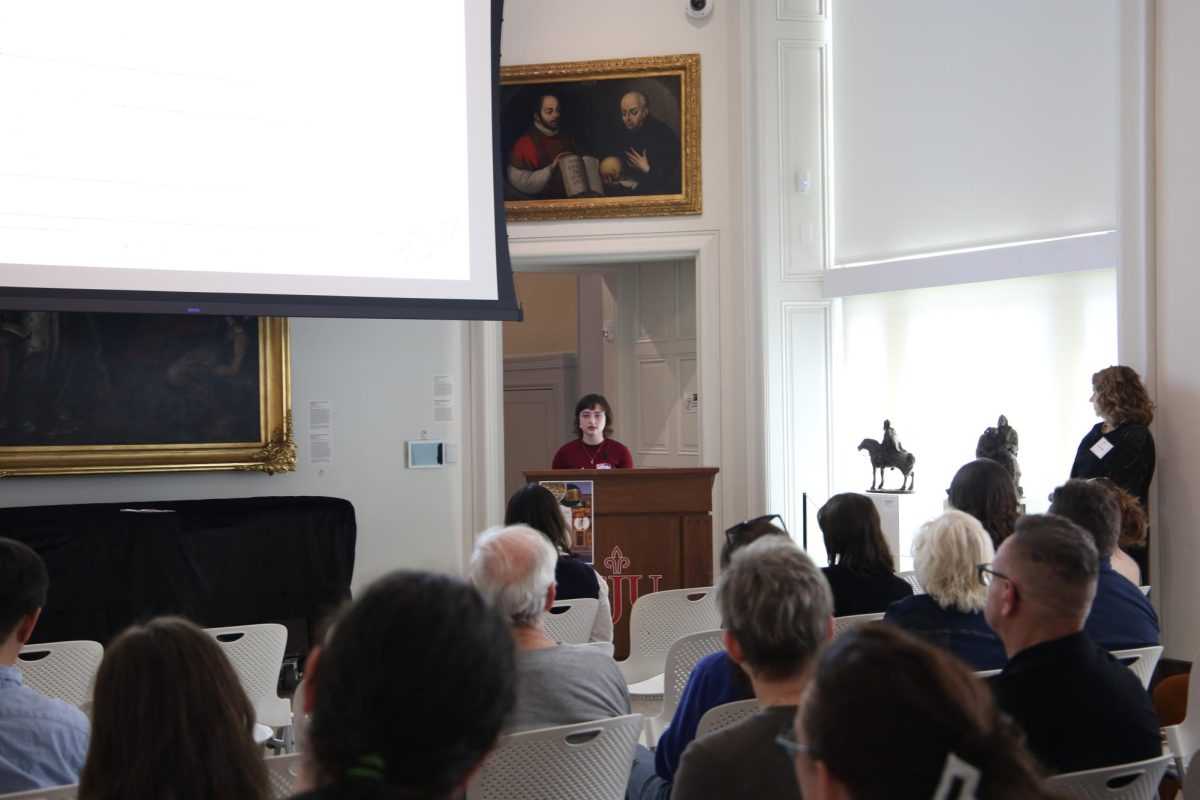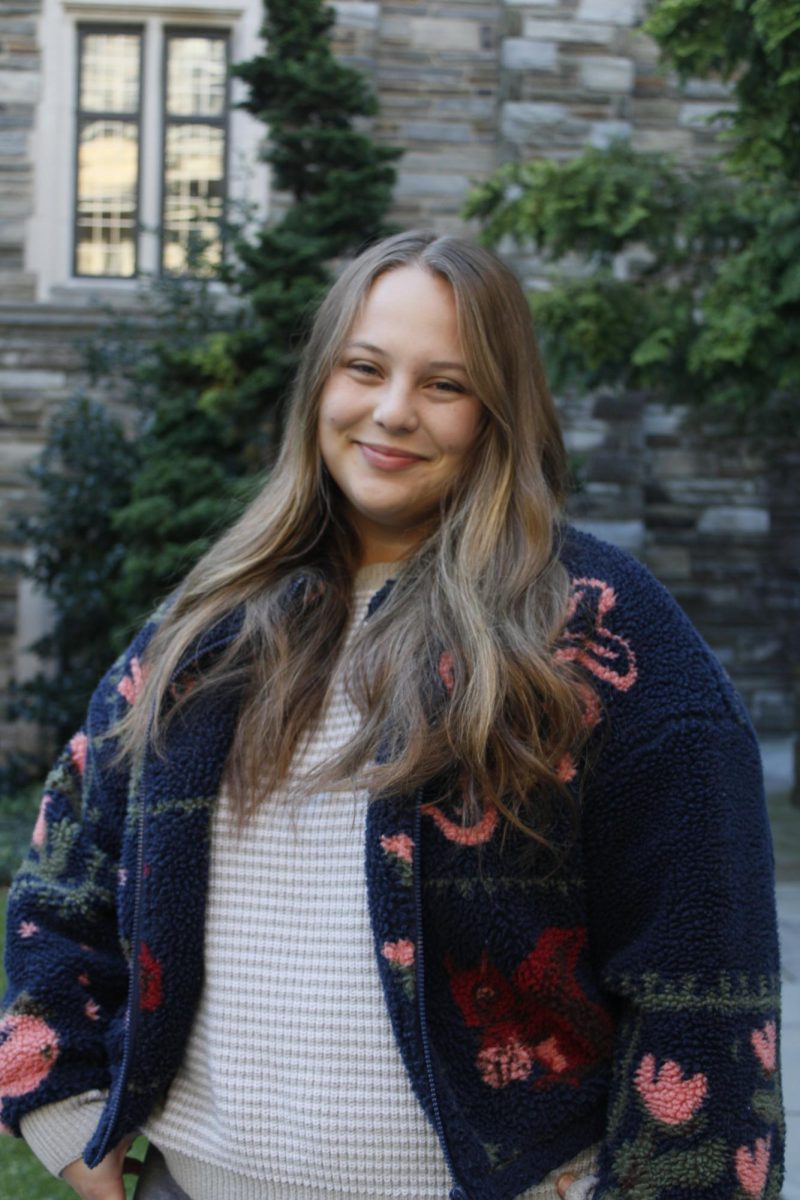Students gathered to present their research at the fourth annual Philadelphia-area Undergraduate Art History Research Symposium, hosted at the Frances M. Maguire Art Museum on March 29.
Martha Easton, Ph.D., associate professor of art history and program director of museum studies, led in the organization of the event. She hosted the first research symposium at St. Joe’s in 2022 with the goal of bringing students together to share their findings.
Easton said she noticed the Graduate Student Symposium on the History of Art had been running for years at the Barnes Foundation, and she wanted to create a similar opportunity for undergraduate art history students.
“I was hoping to create a venue for students to share their research in a professional, but very supportive venue, as well as have the opportunity to meet and make connections with students from other programs,” Easton said.
Eva Hernández ’25 presented her research, “Symbols of War and Death: Picasso’s Vanitas Still Lifes” at the symposium. Hernández said she had an interest in researching how death is represented through art.
“I hope people know that artists throughout time also contemplate death, and they do it through art,” Hernández said. “Because they’re public to us, we can, ourselves, contemplate death through them and that it’s not necessarily a bad thing.”
Undergraduates from the University of Pennsylvania, Bryn Mawr College, and Drexel, Temple, West Chester, La Salle and Villanova universities also came together to present their work from the past year.
Lav Percy Jones, a senior at Temple University, presented “Henri Toulouse-Lautrec, A New Vision on Prostitution.” In their work, Jones tackled a different perspective on prostitution that proposes Toulouse-Lautrec, a French artist in the late 1800s, does not sexualize women in his work.
In their presentation, Jones commented on a Toulouse-Lautrec painting titled “Woman before a Mirror,” challenging the idea that this artwork is not meant to objectify women, a common notion among viewers.
“In this moment of dressing transition, most likely a very busy day, [the model] is taking a moment to reflect upon herself and her form, but whatever she finds and whoever she feels about her reflection is not committed to us,” Jones said. “Her emotions and feelings are perhaps entirely private for her.”
Shannon Tonetta ’26 presented her work, “Pieter Bruegel the Elder’s Effect on the Portrayal of Peasants in Art,” and said the faculty at St. Joe’s have encouraged her to take the leap to pursue and present her research.
“I think that it’s really beautiful that the faculty make an effort for their students outside of the classroom to come and support their other endeavors,” said Tonetta.
Tonetta added that the Maguire Art Museum provides a space for students to present their research and that it’s essential for students to have this platform.
“Having the museum is such a great resource, and it’s an amazing thing that we have our hands on,” Tonetta said. “Showcasing that, trying to get students interested, and showing it off is important, and bringing funding to the arts and humanities right now is important.”
Easton said she aimed to bring students and faculty together to celebrate the achievements of the art history department in this fourth-annual event.
“My goals were to highlight the great work being done in undergraduate art history classes in the Philadelphia area and to provide a supportive atmosphere for students to meet each other and share their work,” Easton said. “I think we accomplished both goals this year.”
It’s important for St. Joe’s to support and promote events regarding art history, Hernández said, to recognize students who are pursuing this path and to show students outside the community the power of art history.
“Art itself is the best record of human expression, how we see the world and different moments in history,” Hernández said. “We can understand them through what humans have created.”



